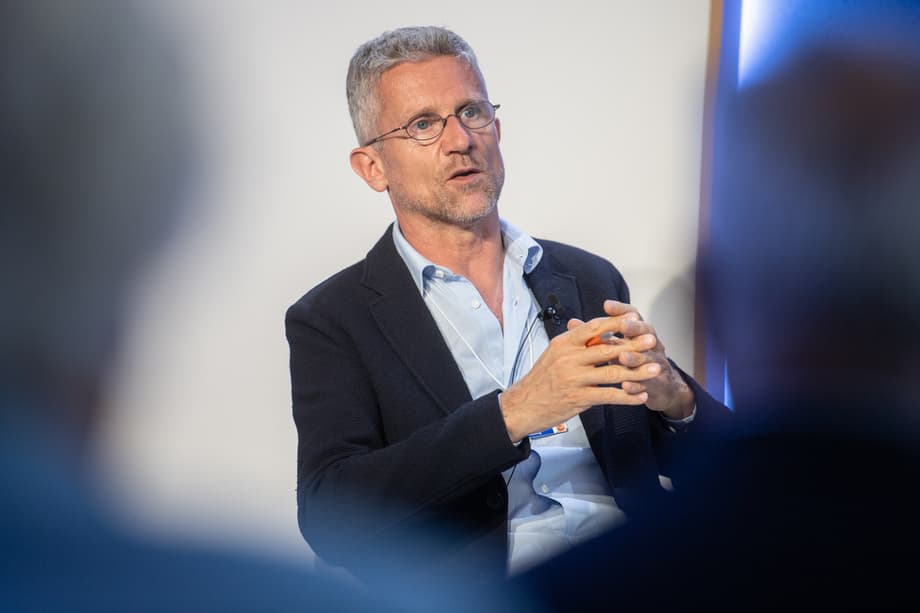Why Seoul is a real world testbed for AI and data driven urbanism
Italian born architect and MIT researcher Carlo Ratti argues that cities should be reborn continuously through data and design rather than built once and left to age. Speaking at the Smart City Expo World Congress in Barcelona, he pointed to South Korea, and Seoul in particular, as a rare place where ideas can be tried at scale and refined quickly. The city is dense and digitally connected. Citizens adopt new services fast. Public agencies have experience with high performance infrastructure. Those ingredients create a living laboratory for urban innovation.
- Why Seoul is a real world testbed for AI and data driven urbanism
- Learning infrastructures, what they are and why they matter
- Seoul’s advantages, density, connectivity and civic appetite
- Governance and ownership, the crux of smart city success
- What AI can already see in the city
- Lessons from China and other testbeds
- Smart street lights and the promise and risk of connected infrastructure
- How population decline changes the smart city agenda
- What success could look like in Seoul
- The Bottom Line
Ratti leads the MIT Senseable City Lab and collaborates with cities across continents. He sees the next wave of urban transformation as the rise of learning infrastructures. Streets, buildings and utilities can sense conditions, adapt in real time, and evolve with residents. That shift depends on embedded sensors, fiber optics and networked control systems. It also depends on rules about who owns the hardware and the data, who can access insights, and how decisions are made. Technology can be deployed anywhere. The hard part is governance.
Demographic change adds urgency. Populations in Korea, Italy, Japan and China are set to decline in coming decades. City leaders will be asked to deliver more comfort, safety and convenience with fewer workers and tighter budgets. The smart choice is to upgrade what exists instead of building new districts from scratch. If infrastructure can learn, a city can respond faster to heat waves, floods, traffic peaks and public health needs. That is the core of Ratti’s case for Seoul as a global testbed.
Learning infrastructures, what they are and why they matter
The traditional approach to infrastructure is to build, commission and maintain. Settings are fixed in manuals. Upgrades come in decades. A learning infrastructure works differently. It senses activity and conditions, runs analytics to predict what is coming next, then adjusts operations on the fly. Signals retime in minutes, not months. Building ventilation adapts to occupancy and outdoor air quality. Drainage systems open and close to absorb sudden storms. The point is not gadgets. It is responsiveness.
From static pipes to responsive networks
Under the street, fiber and power lines carry data from cameras, acoustic sensors, air quality monitors and traffic detectors. On the surface, lidar, Bluetooth and connected vehicle beacons add a second layer of information. In buildings, smart meters, thermostats and lighting networks create fine grained feedback loops. Together they form a digital nervous system. When organized with open standards, this fabric can deliver concrete gains, like faster trips on buses, lower energy costs in schools, safer crosswalks and fewer flooded basements during intense rain.
There are limits. Data is messy. Sensors fail in weather. Cybersecurity cannot be an afterthought. Integration across agencies and vendors is hard. Cities face trade offs, for example between using the richest possible data and protecting privacy. Ratti’s argument is that Seoul has the scale, skills and civic energy to work through those challenges quickly while always keeping people at the center.
Seoul’s advantages, density, connectivity and civic appetite
Seoul brings together attributes that are rare in one place. It is a giant metropolitan region with high transit use, near universal smartphone access and a culture that tries new digital services early. The city has a mature ecosystem of electronics makers, software firms and startups, which means urban pilots can move from concept to deployment without long supply chains. Residents interact with the city through mobile apps and digital kiosks. That creates many touchpoints for feedback, which is essential for iteration.
Speed alone does not guarantee good outcomes. The lesson from past smart city attempts is to keep experiments inclusive. Accessibility, affordability and privacy must shape project design from day one. If pilots only work in high income districts or demand the newest devices, they will miss the people who could benefit the most. Seoul’s strength is that many services, from public transit to digital payments, already work for a broad public. That is a strong foundation for learning infrastructures.
Governance and ownership, the crux of smart city success
Smart city technologies can be copied across borders. What cannot be copied easily is governance. Who owns the sensors in a street light. Who stores the data and for how long. How can residents contest an algorithmic decision that affects them. Cities that answer these questions clearly will scale innovations. Those that do not risk stalled pilots and public backlash. Experience across multiple cities shows that the biggest barriers are often social and institutional rather than technical.
Who owns the data
Data ownership is rarely simple. Raw feeds may be collected by a vendor, processed by a cloud provider and visualized by a city dashboard. Each step creates new rights and obligations. Without careful contracts, a city can lose control over access, formats and timing. The fix is practical. Cities can require open data schemas, data portability, short retention for raw personal data, and independent audits. They can invest in public interest technical teams that know how to evaluate platforms. They can run procurement that favors modular hardware and open interfaces so that components can be swapped without scrapping the whole system.
Building trust through transparency
Ratti advocates radical transparency. Residents should know what is collected, why it is collected, how it is protected and when it is deleted. A public data inventory, clear retention schedules, and plain language explanations go a long way. Tools inspired by Europe’s General Data Protection Regulation give citizens rights to access, correct and delete their personal data. Independent oversight boards and privacy impact assessments help keep systems aligned with public values. When people see that safeguards are real, they are more likely to accept sensors in shared spaces and to contribute their own data for the common good.
Trust also rests on choice. Not every service requires mandatory participation. Opt in programs, clear signage in sensor zones and easy ways to file complaints can reduce anxiety. Cities can publish algorithm registers, open up models for external review and sponsor red team exercises to find risks before they cause harm. These are governance tools, not technical features, and they are decisive for long term success.
What AI can already see in the city
Artificial intelligence now helps planners read the urban environment at scale. It can map tree canopy, shade and pavement, estimate speeds on sidewalks, and detect conflict points where vehicles and people come too close. Ratti and collaborators are applying these methods in Korea through a project known as Nature That Heals, Seoul. The idea is to connect what people feel in parks and streets with measurable features of greenery and design. If a shaded bench near a fountain leads people to linger and their stress drops, the system should detect the pattern and guide investment to create more such places.
From images to insights about wellness
Computer vision can classify elements like trees, grass, water, shade structures and seating from images. Combined with microclimate sensors and anonymized mobility data, it can reveal which paths are comfortable in summer, which plazas are too noisy, and where simple changes could increase daily physical activity. The output is not a single score. It is a map of opportunities. Planners can compare conditions block by block and test whether a new grove of trees, a misting station or a sound barrier improves comfort and use.
Ethics matter. Systems should avoid identifying people and should process sensitive footage at the edge so raw video does not leave the device. Aggregation and noise injection can protect privacy while preserving trends. Teams should check for bias, for example if images from certain districts are underrepresented. A project about wellness cannot succeed if large parts of the city are invisible in the training data.
Lessons from China and other testbeds
Ratti has long argued that the best smart city models grow from human needs rather than from a checklist of technologies. He uses the term senseable city to stress that sensors and software should help people sense and shape their environment. China offers useful lessons on speed and scale. In places like Shenzhen, a combination of rapid urbanization, manufacturing capacity and entrepreneurial culture produced a living workshop for urban tech. International teams study how public space, transport and industry have evolved together there.
Avoiding sterile outcomes from top down planning
Early showcase projects in different countries, including purpose built new towns, taught a cautionary lesson. When plans are too rigid and decisions come only from the top, neighborhoods can feel sterile. Innovation then becomes a layer that is applied to an empty stage. Mature cities that evolve block by block, with active ground floors and a mix of uses, tend to absorb technology in a more natural way. The insight for Seoul is to keep experiments close to daily life, to test on real streets and in busy stations, and to welcome feedback that challenges the initial plan.
Private companies are essential partners, yet cities should guard against lock in and standardization that stifle local character. Diverse approaches and open dialogue help ensure that connected systems improve public life without flattening the city into a template.
Smart street lights and the promise and risk of connected infrastructure
Street lights are a useful example of learning infrastructure. When upgraded with energy efficient LEDs, they save money immediately. Add connectivity and they can dim when no one is around, report outages, and host sensors that detect air pollution, traffic speeds and parking availability. The same pole can help emergency services, adjust timing for pedestrians, and support 5G small cells. In theory this is a win for safety, climate and convenience.
Making multipurpose hardware work for everyone
Practice is harder than theory. Traditional departments are organized by function. Lighting crews care about light. Transport teams care about signals. Health departments care about air quality. A multi purpose pole cuts across these silos. Clear governance is needed so responsibilities and budgets do not fall between cracks. Procurement should reward modularity, so a city can add or replace sensor cartridges without changing the whole fixture. Privacy policies must be unambiguous. If cameras are used, on device redaction and short retention should be the default. Many cities limit collection to counts and speeds, not identities, which reduces risk while still guiding better street design.
Interviews with city officials and industry show a pattern. Vendors often push proprietary data platforms. Utilities focus on reliable light, which is their mission. City managers want service delivery today, while open data advocates hope for platforms that support future apps. The path through these tensions is to set policy first, then buy hardware that fits the policy, not the reverse. When residents are involved early and data rights are protected, connected street lights can become a trusted backbone for urban intelligence.
How population decline changes the smart city agenda
Shrinking populations change the questions that planners ask. The goal is less about expanding supply and more about getting better use from what is already built. Adaptive traffic lanes can switch between freight loading, bus priority and cycling by time of day. Unused office space can become libraries, clinics or co study rooms. Water and energy systems can right size operations as demand falls, cutting costs without sacrificing reliability. When infrastructure learns, it can adjust to right sized service levels without long delays.
Aging is another force shaping priorities. Streets with shorter crossings, more benches and stronger shade help older residents stay active. Remote health services and social care can ride on the same networks that manage energy and transport. The best smart city projects in this context are those that make daily life easier for caregivers, faster for emergency responders and calmer for everyone in extreme heat. Technology is the tool. The outcome is comfort and dignity.
What success could look like in Seoul
Success will be visible in small improvements that add up. Bus riders experience shorter travel times because signals sense approaching vehicles and open green waves. Flood prone blocks see fewer shop closures because storm drains are monitored and controlled before the cloudburst hits. Summer walks get cooler as the city targets shade where people already move, and monitors whether the new trees deliver the expected drop in temperature. Utilities use demand data to time maintenance so outages are rarer and shorter.
Success will also be visible in governance. A public website lists every sensor type, its location by block, the purpose of each deployment, the data collected and the retention period. Algorithm registers show how models used for parking prices or building inspections are trained and how they are tested for bias. Residents can download their own data where it exists, correct it and ask for deletion. An independent board checks compliance and publishes quarterly reports.
Finally, success will be visible in economic and social life. Open interfaces let startups build services on top of city systems, from wayfinding for people with low vision to delivery routing that reduces noise at night. Universities and civic groups use open datasets to evaluate climate resilience and public health. Neighborhoods that were outside the spotlight get early upgrades, not just the center. A living lab then becomes a living city, where experimentation is a habit and benefits reach a broad public.
The Bottom Line
- Carlo Ratti highlights Seoul as a rare real world laboratory where smart city ideas can be tested at scale and refined quickly.
- The focus is on learning infrastructures that sense, adapt and evolve, so existing cities improve rather than building new ones from scratch.
- Governance, ownership and privacy are decisive. Clear data rights, transparency and citizen oversight build trust.
- AI projects, including Nature That Heals, Seoul, use computer vision and sensors to link green space design with wellness outcomes.
- Lessons from China point to people first approaches and caution against rigid top down planning that produces sterile places.
- Connected street lights show both promise and risk. The main barriers are social and institutional, not technological.
- Population decline shifts priorities toward retrofits, flexible operations and services that support an aging society.
- Success in Seoul would show up in faster buses, cooler walks, fewer floods and strong public transparency about how systems work.




